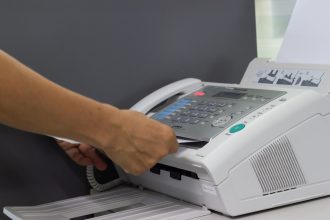Shipping cargo overseas invariably requires voyage planning that balances efficiency, resilience and compliance across a continuous chain of fragmented supply chain components. While sea freight services specialise in maritime transportation legs, fully grasping operational contexts, vessel types, container formats plus port and documentation needs allows more informed logistics decision-making at each handover between providers.
Understanding what flexibility different shipping options offer given authority regulations, route availabilities, seasonal variations and cost structures also empowers adaptable responses to unexpected disruption events. This overview examines core sea freight facets from a UK logistics perspective.
Breakbulk, Bulk and Containerised Freight
The days of cargo stuffed loose into standard ship holds continue fading due to the dominance of containerised transportation. However, some specialist and oversized consignments still transport under breakbulk or bulk freight methodologies using bespoke handling at terminals. However, volume efficiencies make container formats the best practice for general merchandise trading and manufacturing supply chains.
Breakbulk refers to non-uniform, often heavy or awkward cargo transported unpackaged given issues placing such goods into containers. Requirements range from project equipment like industrial machinery or wind turbine blades through vehicles to steel beams or railway tracks. Special lifting gear and open packing areas allow safer breakbulk cargo loading compared to alternatives.
In contrast, smaller standardised items are transported efficiently and stacked inside purpose-built shipping containers secured on specifically designed container vessels. As intermodal freight boxes, these easily transfer between trucks, trains and ships via handling automation at ports. Containers therefore speed loading with precision stacking aboard while protecting contents across transportation phases.
Commercial Vessels and Routes
Containers and certain breakbulk items ship on dedicated container ships running scheduled services across set ocean regions like Asia-Europe. Operators publish annual timetables detailing routes and port calls by vessels catering for quantified cargo volumes. But tramp steamers offering more flexible routing also play interim supplementary roles across changing supply-demand balances.
Modern purpose-built cellular container ships continue pushing size boundaries to realise economies of scale from bigger capacities. The largest mega-ships operated by Maersk and MSC now carry over 20,000 containers on prime Asia-Europe trades. Cargo consolidates efficiently at regional hubs before transferring to feeder ships that distribute between smaller ports. But such titans depend on custom deep-water terminals and cranes at both ends to facilitate movements.
Alternatively, smaller geared container vessels offer ship-based cranes for self-sufficient port calls at unequipped locations common across emerging markets and remote islands. This enables economical multi-port routes skipping costly hub transitions. However, load capacities lag behind true giants without similar height-stacking capabilities.
Critical Documentation Needs
Sea freight services rely on various documents that must accompany containerised consignments during each voyage to confirm identities, meet regulations and clear customs formalities. Therefore, shippers require an upfront understanding of mandatory paperwork to avoid transit delays, fines or rejections during port clearances.
The bill of lading acts as the core contractual receipt between the cargo owner and carrier covering consent for freight transportation. This gets presented to collect goods at destinations after paying any outstanding charges. Details like consigner, consignee, vessel, origin/destination points and contents feature alongside terms and conditions.
Additionally, exporters generate commercial invoices and packing lists for customs clearance needs detailing traded items and parties in transactions. Securing required export licenses for controlled commodities also falls to shippers before vessels depart their origin borders. Obtaining delivery orders from shipping lines often complete release requirements when arriving at receivers’ premises.
Moreover, various dangerous goods declarations and agricultural certificates apply depending on load types. Advanced cargo screening submissions to authorities also help accelerate security clearances for certain EU and UK ports. Overall, sea freight documentation proves mandatory, not optional.
Conclusion
Streamlining sea transportation comes down to systematically addressing key vessel, container, route and paperwork factors based on logistical requirements balanced against constraints. While specialising third-party assistance makes sense for smaller shippers, self-managing fundamentals allow contextual understanding to support tie-ups with carriers and forwarders. This combines preferred transit options with documentation accuracy for smooth port clearances across global supply chain flows.















